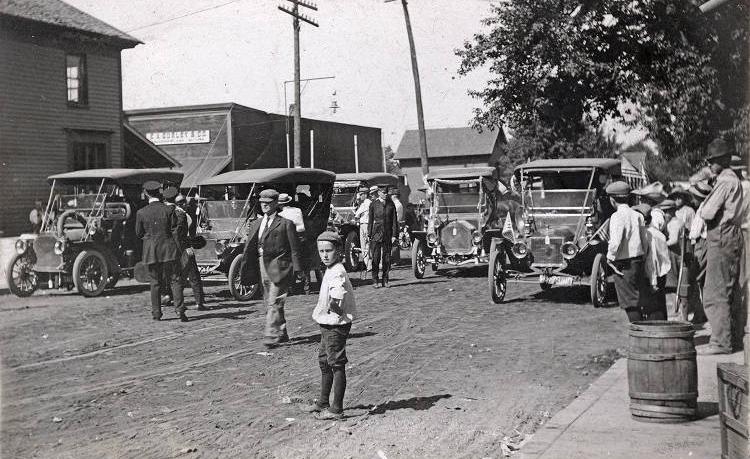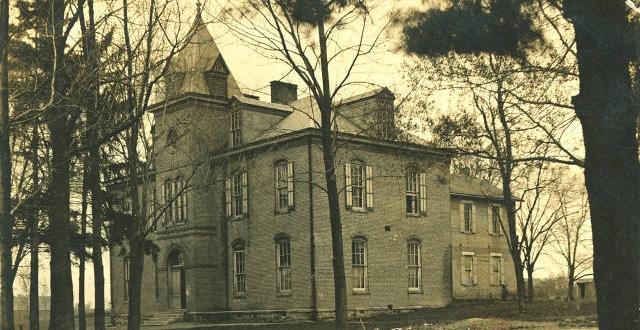Westfield is located in western , nine miles north of Indianapolis. In 1832, the area not yet defined as Westfield was first settled by North Carola Quakers Asa and Suzanna Bales. They opened the first business in the area, a general store. Bales’ pioneering efforts helped settle this region before it was platted. One year later the first public elections were established in Bales’ home. Two justices of the peace and other officers were elected to establish a rudimentary local government.

On May 6, 1834, Bales and fellow Quakers from North Carolina, Ambrose Osborne and Simon Moon platted the streets and founded Westfield. The original plat included 48 lots located in and around what is the center of the city. Bales named the city Westfield after the “Westfield Friends Monthly Meeting,” a Quaker antislavery group in North Carolina.
The town was planned as an important home station on the Underground Railroad with many families of the Religious Society of Friends and the Wesleyan Methodist Church supporting the cause. As punishment for harboring escaped enslaved people stiffened, part of the Westfield Quaker Friends Meeting House split into the Anti-Slavery Friends Meeting. Bales was instrumental in establishing the new congregation. He provided land on North Union Street for the Anti-Slavery Friends Meeting House and Cemetery.
Bales and other settlers in Westfield offered a safe haven for enslaved people who were en route to Canada on the Underground Railroad. The heads of families strategically hid runaway enslaved people in homes and barns while their wives provided food and clothing for the runaways.
Both Bales died in 1845 before witnessing the incorporation of Westfield as a town in 1849. Township enumerator Elam J. Brown compiled a close count of farm production for the first Federal Agricultural Census in 1850, revealing that most farms in the county, including Westfield, had more acres as woods than as cleared for agricultural production of the primary crops, corn, wheat, and oats. Products of industry included those produced at the Westfield sawmill, blacksmith, lumber yard, and cabinet maker. By the end of the 1860s Westfield had merchants, druggists, produce shops, shoemakers, bricklayers, a grist mill, a woolen factory, a hotel, and physicians, notably Dr. Levi Coffin.
Westfield had a train stop as early as 1883 when the trains passed through town. In the first decades of the 20th-century, the town continued to experience growth with the advent of the . Not only did the electric train provide access to Indianapolis shopping, entertainment, and jobs but electricity also arrived at towns like Westfield which formerly relied on lamplighters to illuminate burgeoning downtown area streets. The first interurbans arrived in , the closest stop to Westfield, on October 30, 1903, and continued to serve the area until 1938 when automobiles supplanted the interurbans due to their speed and affordability for many Americans.
Westfield remained a mostly rural farm-based economy throughout the 20th-century. In 1914, George Van Camp purchased the Hamilton County Packing Company in Westfield and changed its name to George Van Camp & Sons. The company began with 100 employees and grew to 800 before declaring bankruptcy in 1928. The cannery business changed ownership numerous times before burning down in 1944. The construction of the in October 1926 and its expansion to a four-lane highway in the 1950s served more as a transportation route than as a catalyst to business.

Though Westfield was settled by abolitionists who supported the antislavery movement, African Americans faced enduring racism in the town. During the Reconstruction years, African Americans in the country did have positions of nominal power in the township politics, but with the rise of the in 1900, specifically in 1920 with a county chapter, African Americans were pushed out of politics, restaurants and theatres became segregated, and neighborhoods became “restricted.” The Black population in the county and Westfield peaked in 1880 and steadily declined from 1900-1970, with there being only 272 African Americans out of 54,532 residents in the county in 1970.
On January 1, 2008, Westfield was incorporated as a city, and Andy Cook was sworn in as mayor. Westfield also annexed parts of southern Washington Township and the community of Jolietville. Easy access to Westfield from the U.S. 31, the expansion of State Road 32, and the addition of roundabouts to prevent congestion have attracted businesses to the city, filling the Northpoint Industrial Park. Building permits for single-family homes have soared, pushing the Westfield Community School system to expand to accommodate an influx of students. The school system has undertaken the expansion of Westfield High School and its middle and intermediate schools.
In late 2019, Westfield officials announced continued expectations for economic growth as they implement a plan developed years ago. The first phase of the plan involved building the colossal Sports Complex to attract the hospitality industry. In 2014, the city opened the sports complex, the largest youth sports complex in the U.S. The venue boasts 26 baseball/softball diamonds, 31 multipurpose fields, an indoor events center, and an indoor basketball/volley center. Additionally, there are more than 10 miles of outdoor trails on the property.
In February 2020, the Westfield City Council unanimously approved the construction of a 105,000 square foot science center named Grand Universe which upon completion will be the largest planetarium in the Midwest. The second phase will diversify the city with more advanced manufacturing businesses.
In September 2020, Magazine named Westfield the sixth-best place to live in the United States.

Is this your community?
Do you have photos or stories?
Contribute to this page by emailing us your suggestions.